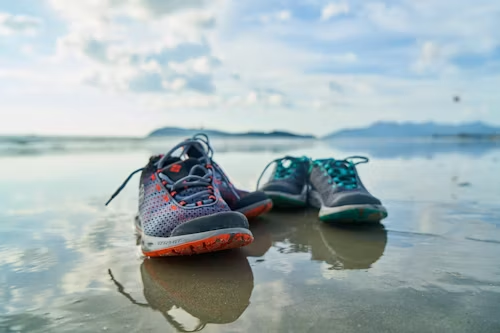Table of Contents
ToggleHow to Choose the Best Walking Shoes for Your Vacation
The shoes you wear on vacation can make or break your travel experience—especially if you plan to explore on foot. Everyone’s feet are different, and what works for one person may not work for another. Choosing the right walking shoes can help you stay comfortable, avoid injuries, and enjoy every step of your journey.
Here’s a simple guide to help you pick the perfect walking shoes for your next trip:
1. Start with a Proper Fit
Visit a specialty athletic or footwear store where trained staff can assess your walking style. A professional gait analysis helps match you with shoes that support your natural movement.
2. Account for Swelling
Feet tend to swell after long walks. To avoid tight shoes, choose a pair that’s about half a size to a full size larger than your regular size. The best time to try on walking shoes is in the evening or after a long walk—when your feet are naturally swollen.
3. Wear the Right Socks When Fitting
Always try on walking shoes with the socks you’ll wear during your trip. This gives you the most accurate sense of fit and helps avoid surprises later.
4. Match the Shoe to the Terrain
Think about where you’ll be walking:
-
For paved roads and city sidewalks, lightweight walking or running shoes offer the right balance of comfort and flexibility.
-
For rough trails or off-road hikes, hiking shoes or boots offer better grip and protection, but keep in mind they tend to be heavier and less flexible.
5. Check for Toe Room and Width
A snug fit might seem secure, but your toes need space to move. Make sure there’s enough room in the toe box and at the sides to avoid blisters. If your feet are wider or narrower than average, go for shoes specifically designed in your width.
6. Look for Cushioning vs. Support
Cushioned walking shoes are ideal for smoother paths and city exploration. They provide comfort for extended walking but may have slightly less structural support. If you’ll be on uneven ground, you may want shoes with more stability.
7. Keep It Light
When you’re on your feet all day, every ounce counts. Lightweight shoes reduce fatigue and make walking more enjoyable. If you’re mostly sticking to well-maintained trails or sidewalks, you can prioritize lightness over heavy-duty support.
8. Avoid Problematic Design Features
Skip shoes with:
-
Thick, flared soles that throw off your balance
-
Heels that are much higher than the front of the shoe (more than one inch)
These styles can interfere with your natural stride and lead to discomfort or injury.
9. Flexibility Matters
Bend the shoe at the ball of the foot. It should twist and bend easily in that area. A flexible sole helps your foot move naturally and reduces strain during long walks.
10. Don’t Settle for Poor Fit
Whether you have wide, narrow, high-arched, or flat feet, there’s a shoe designed to fit your shape. Don’t compromise. The wrong fit will catch up with you quickly—often in the form of blisters or sore feet.
In Summary
Choosing the right walking shoes is one of the most important steps you can take to ensure a stress-free and enjoyable vacation. Take the time to find a pair that fits well, suits the terrain, and feels comfortable from the first step. Your feet—and your entire travel experience—will thank you.



